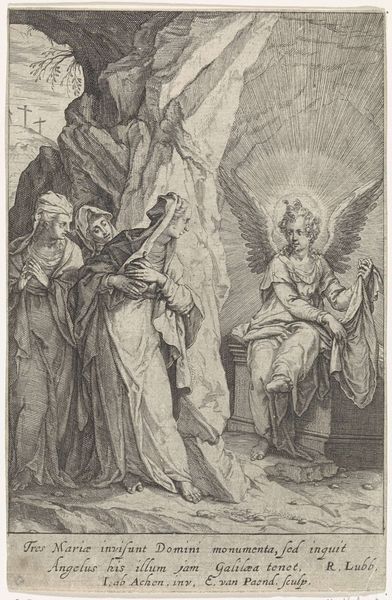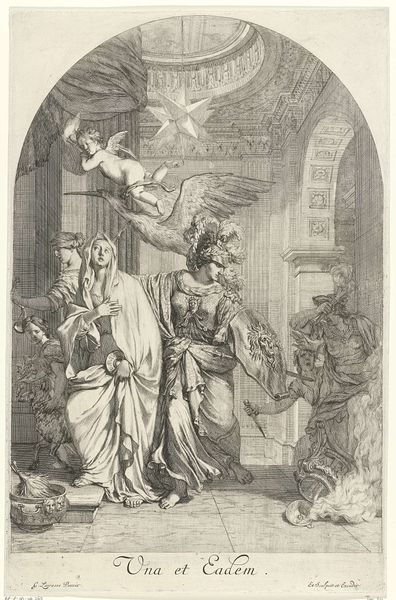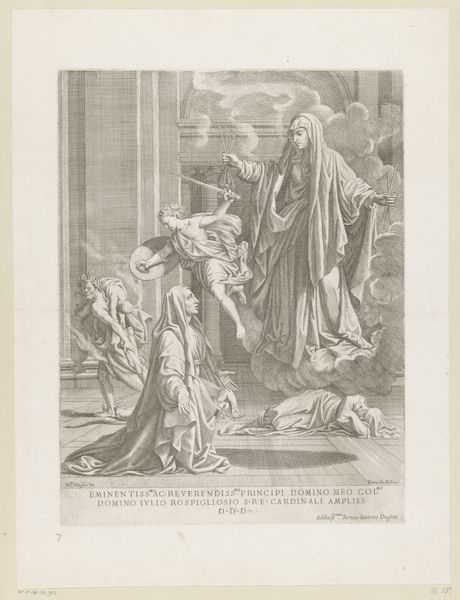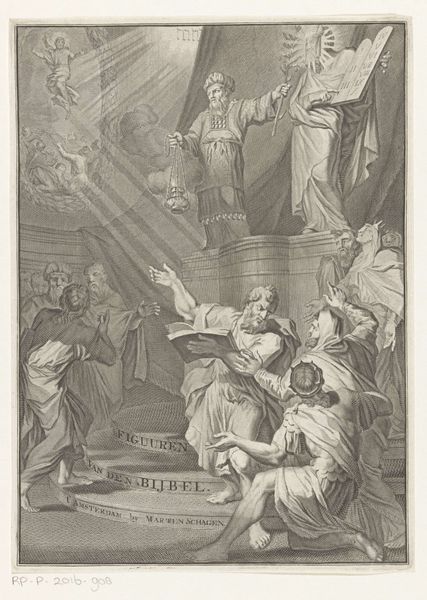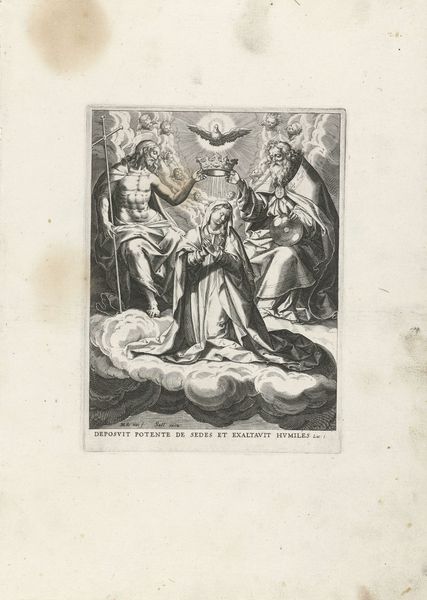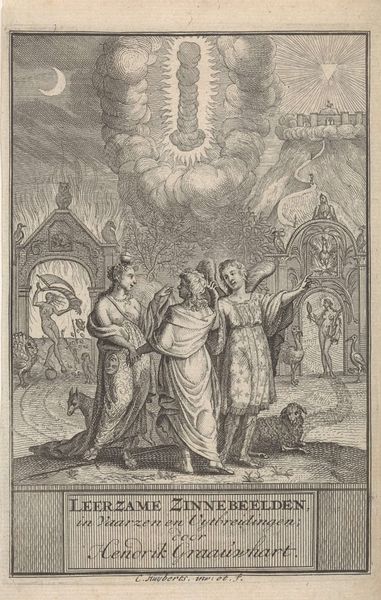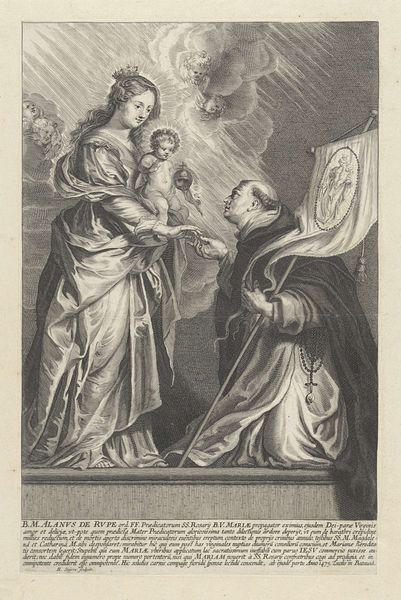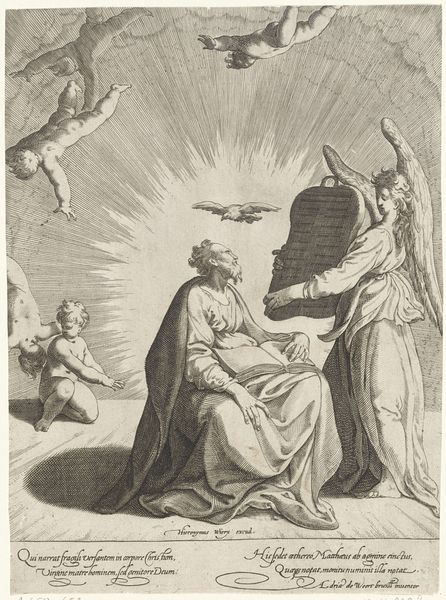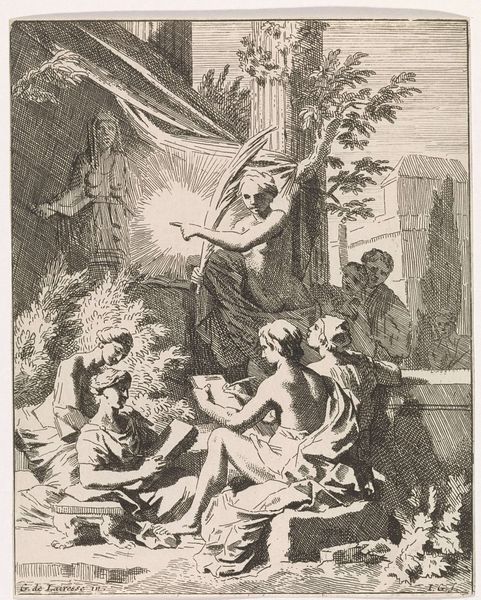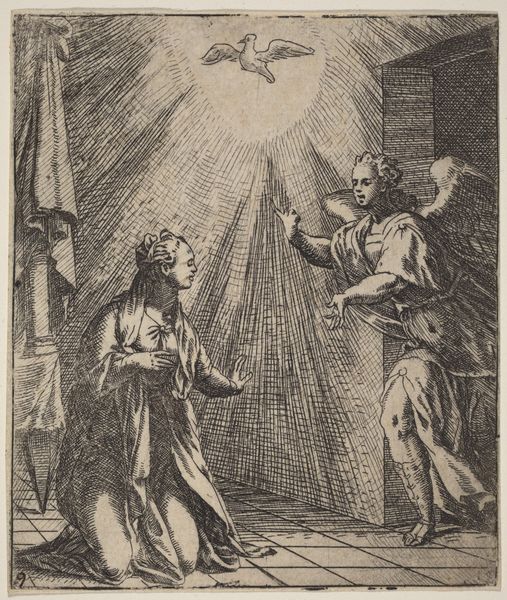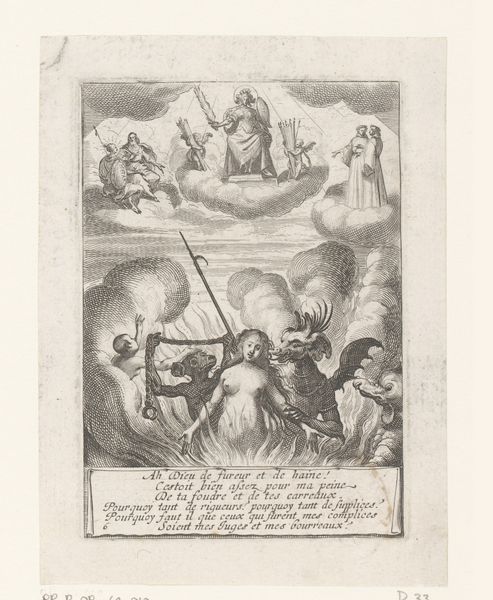
print, engraving
#
baroque
# print
#
history-painting
#
engraving
Dimensions: height 134 mm, width 91 mm
Copyright: Rijks Museum: Open Domain
Curator: Welcome. Here we see “The Three Marys at the Tomb,” an engraving by Egbert van Panderen, dating from around 1590 to 1637. It is part of the Rijksmuseum collection. What is your immediate reaction? Editor: The first thing that strikes me is the stark contrast between the trepidation of the Marys on the left and the serene radiance emanating from the angel on the right. It creates a powerful visual dichotomy. Curator: Indeed. The composition is meticulously structured. Note how the artist uses the cave's opening to frame the angel, drawing the eye to its central position. The lines are clean and deliberate. Editor: Absolutely. The angel itself is laden with symbolism. Its youthful appearance, the wings, and the halo of light are all classical representations of divine messengers, intended to inspire hope and promise. But look closer – the shroud it holds points not just to death but, specifically, to Christ's body, a visceral and unavoidable detail in the narrative. Curator: A clever integration of narrative elements, and an articulation of absence! The vacant tomb juxtaposed with the cross symbols in the far-left background provides a layered experience that enriches our perception of faith’s tenants. Van Panderen utilizes the baroque style, seen through dramatic composition, a pronounced play of light, and meticulously rendered texture to reinforce narrative dynamism. Editor: Consider also, beyond composition, the cultural weight embedded within the very scene itself. These Marys represent not just mourning but perseverance. This image reminds us of the potent role women held in early Christian narratives as witnesses and carriers of truth. Curator: And it's vital to examine how Van Panderen, in organizing his pictorial structure, conveys the gravity of this specific narrative within Christianity. He constructs visual motifs and their impact—divine revelation disrupting mortal suffering. Editor: So, on the one hand, we have the structured formalism and the technical execution... Curator: ...while on the other, we're deeply intertwined in historical memory. Both these avenues enhance a deeper appreciation of the artistic experience. Editor: Indeed, a testament to the power of symbols to bridge history, emotion, and belief.
Comments
No comments
Be the first to comment and join the conversation on the ultimate creative platform.
